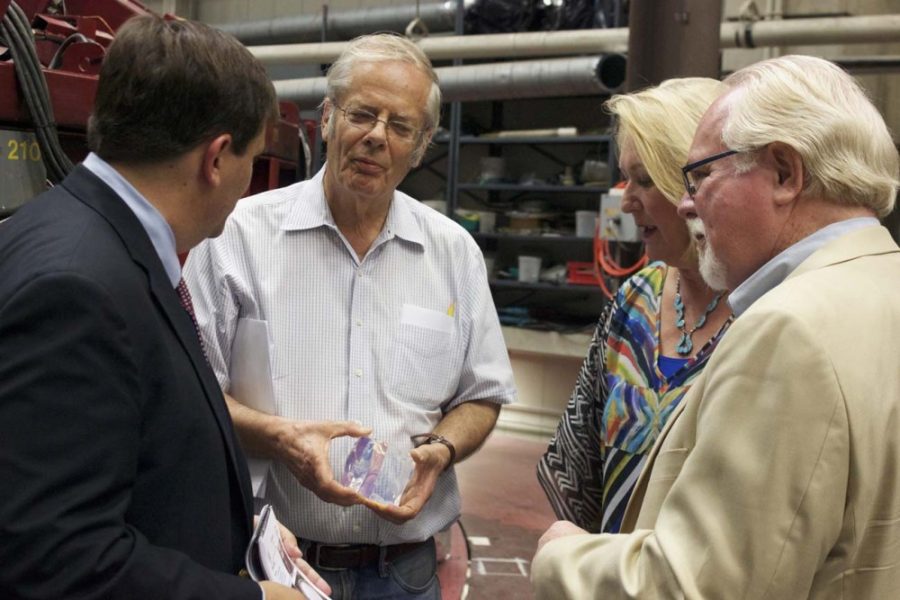Congressman Ron Barber visited the UA Wednesday to learn about the importance of photonics and to help make the science more of a priority in the U.S. government.
In 1998, the National Research Council released a report that showed the potential benefits of photonics and optics in fields such as healthcare and defense. After the report’s release, several countries began funding optic and photonics projects.
Photonics and optics is the science and application of light. Photonics detects and controls particles of light that can help enhance the technology behind medical advancements and homeland security technologies.
However, the United States has fallen behind in its photonics research. Last year, the NRC released the National Photonics Initiative, urging the U.S. to make photonics research a national priority.
The U.S. has “lost [its] edge” in the study of photonics, Barber said, especially since China and India are graduating more students than the U.S. in the science, technology, engineering, and mathematics fields.
Luz Palomarez, director of personnel and special assistant to the dean of the College of Optical Sciences, said Wednesday’s event was held in order to inform the community, business, and Congress of the importance of NPI.
“What we’re doing here at optical sciences really affects almost everything we do across the country,” Palomarez said.
Barber toured the Steward Observatory Mirror Lab after the dean of the College of Optical Sciences spoke about the importance of photonics. Peter Strittmatter, an astronomy professor at the UA, provided insight on the development of photonics.
“Photonics is much broader than you’re seeing here today,” Strittmatter said. “This is how optics actually developed and if you go back to Isaac Newton making the first mirrors and so forth, they were all for astronomical purposes.”
To make photonics more of a priority in the U.S. government, Barber said he plans to use white paper, published by the NPI, as a guide for him and his staff.
“The white paper is very helpful because it really lays out the major recommendations that the initiative has developed,” Barber said. “I’ll be sharing them with my staff back in DC. We’ll keep a close watch on things we can do to help make those recommendations a reality.”
In order for the U.S. to stay ahead of other countries in photonics research Barber said more students need to become a part of the research community. According to Barber, in Pima County alone, there are more than 15,000 people working in the optics industry.
“We have to do everything we can and there are many pieces to this,” Barber said. “To get students interested in STEM, to find the big idea or ideas that make them want to go into the STEM fields, to make sure we find research and developments so they’ll have something to work on at the universities.”









